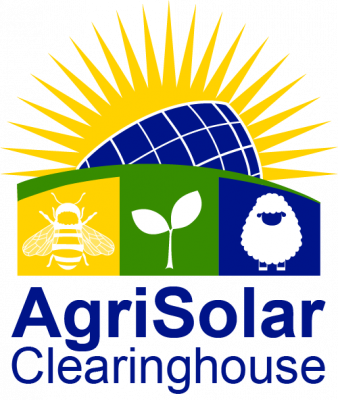This study addresses the interplay between radiation transmission, crop development and irrigation needs of corn cropping in field conditions, by the description of crop development dynamics, distinguishing between fixed and dynamic panels. Researchers showed that maize crop responded to both independent and combined stresses (shade and water deficit), with a significant decrease in leaf area index, total dry matter and grain yield. Concerning water use, we showed the potential of AV to reduce irrigation inputs via reduced soil water depletion and reference evapotranspiration.
In this study, a Consequential Life‐Cycle Assessment (CLCA) was conducted to holistically assess the environmental consequences arising from a shift from single‐use agriculture to agrivoltaic systems (AVS) in Germany. The results of the study show that the environmental consequences of the installation of overhead AVS on agricultural land are positive and reduce the impacts in 15 of the 16 analyzed impact categories.
This two-year study aimed to analyze whether intermittent shading produced by panels placed over grapevines can delay grape ripening to counter the impact of global warning on phenology. Researchers concluded that intermittent shading produced by panels can shift ripening into a cooler period compared to unshaded plants. They also state that shading intensity and duration should be adapted to evaporative and soil water conditions to benefit from the phenological delay caused by panels, without altering production in the long term.
This research was conducted to investigate the roasting capacity of a batch-type directly solar radiated roasting system for the decentralized processing of coffee using solar energy. Experimental results revealed that the roaster was capable of roasting a batch of 2 kg coffee beans in 20, 23, and 25 minutes subjected to light roasts, medium roasts, and dark roasts, respectively. The payback period of the solar roaster unit was estimated to be 1038 working sunshine hours, making it viable for commercialization.
This research details the design of a solar coffee roaster in rural Peru, and presents the result of experimental roasts. Researchers also discuss future improvements that could be made to the design.
This paper applied an open-source spatial-based model to quantify the solar power generation (the ground-mounted photovoltaic panels) for the southern regions of Poland and Ukraine. Researchers then compared economic indicators of the solar power generation and the crop production projects for rain-fed land. The analysis revealed that the PV projects have higher net present value, but lower profitability index compared to the crop production.
This PhD dissertation addresses four primary questions: 1.) To what extent is plant-available radiation reduced by solar panels of a photovoltaic system? 2.) How does this effect parameters of aerial and soil climate? 3.) How do the cultivated crops respond to the altered cropping conditions with regard to plant growth and development? 4.) What consequences does this have regarding the yields and the chemical composition of the investigated crop-species? A field experiment in which grass clover, potatoes, celery, and winter wheat were planted under a photovoltaic facility in Southwest Germany was conducted to answer these questions.
This study evaluates green bean cultivation inside greenhouses with photovoltaic (PV) panels on the roof. Researchers found that the beans adapted to the change in shading by relocating more resources to the stems and leaves. As a result, average yield decreased compared to that of a conventional greenhouse. However, an economic trade-off between energy and crop yield can be achieved with a panel coverage of 10%. The research also provides an experimental framework that could be replicated and used as a decision support tool to identify other crops suitable for solar greenhouse cultivation.
The effect of shading on the performance of Cabernet Sauvignon was studied. Significant different levels of canopy density were created using the growth of neighbouring vines, thus ensuring no artificial change in natural light composition. Light penetration in these canopies differed significantly between treatments. Berry mass, bunch mass and yield as well as skin colour were decreased with increasing levels of shading, while pH, K-concentration and TT A were increased. Tartaric acid decreased while malic acid increased with an increase in shading. Wine quality was negatively affected.
